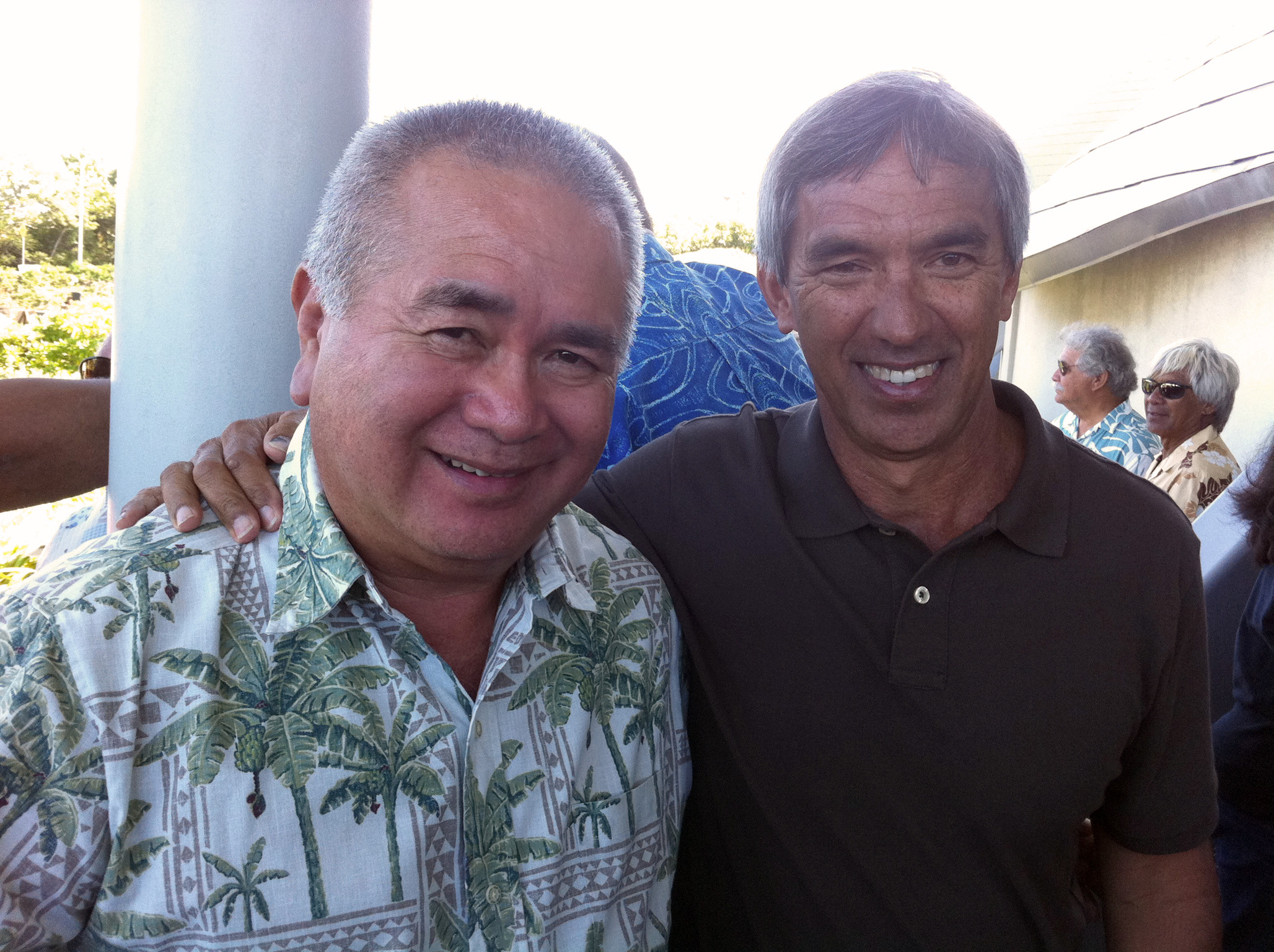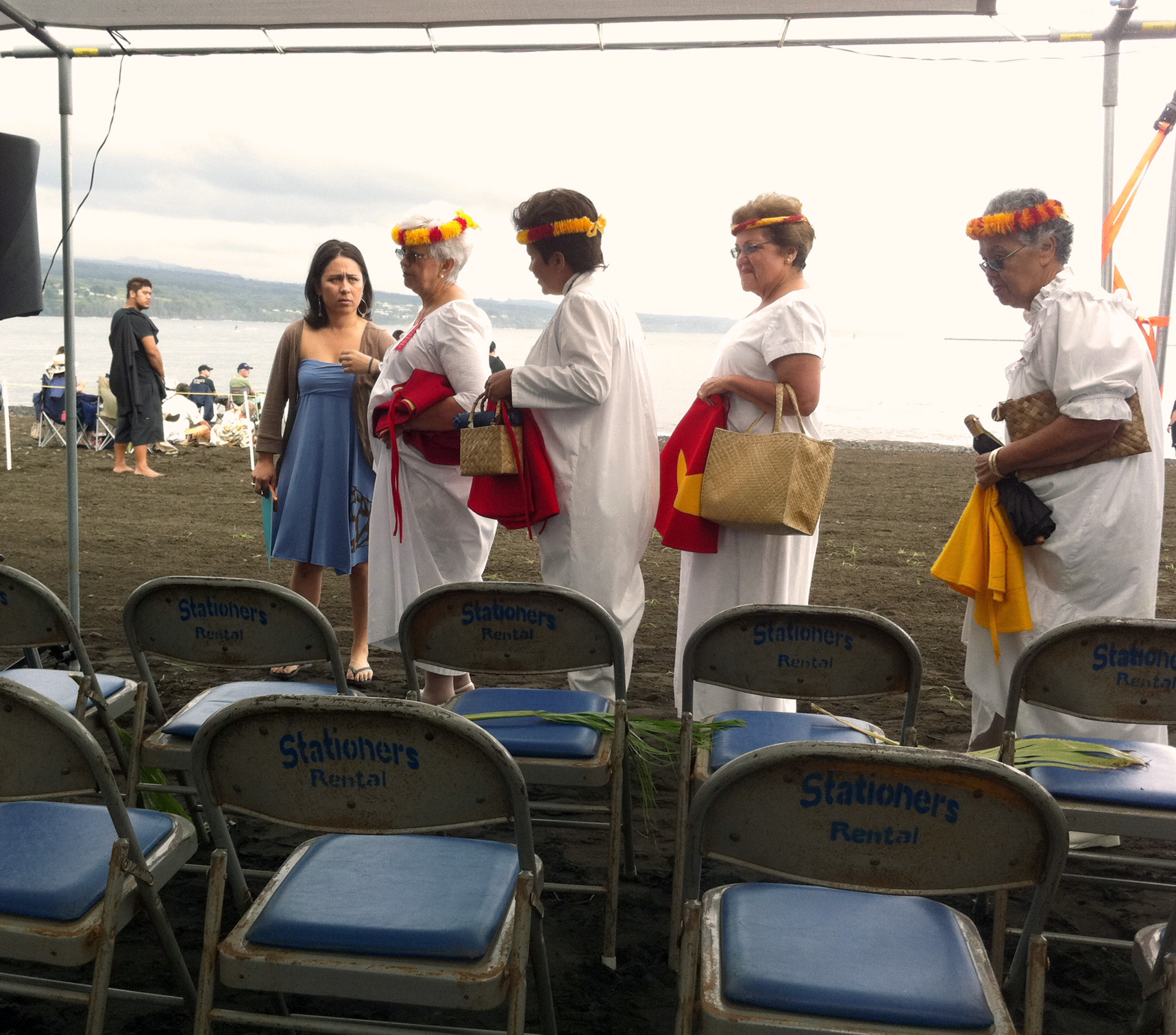There’s something historic, and very interesting, going on in Hilo this weekend. Do you know about the vaka? The canoes?

They are seven Polynesian-style canoes, representing different Pacific Islands, and all built in the last two years for this particular mission. Their crews have spent the past two months voyaging from Aotearoa (New Zealand) to Hawai‘i, and Hilo is their first landfall. They arrived yesterday at Hilo Bay.
They are calling their journey Te Mana O Te Moana. “The Spirit Of The Sea.”
“…Several thousand years ago, the Polynesian ancestors traveled the Pacific on great voyaging canoes, called vaka moana, using only the stars, the ocean, and the surrounding wildlife to navigate, and lived closely connected to the sea. In crossing the Pacific from Aotearoa to Hawai’i, we aim to sail in the ancestors’ wake and learn from their wisdom. We want to teach young people about this old bond with the sea.”
Richard went by yesterday, and saw five of them already moored and latched together. “I watched the last two canoes, with their sails down, tie up,” he said. “They had someone blow the conch shell as they approached. People seemed very much aware of the historical nature of this event.

(Renowned hula master Pua Kanahele)
“The canoe folks stayed on board and some did special ceremonies, ending with each person hugging the rest individually. I left after they all arrived,” he said. “But more and more people were coming by to participate in history being made.”

(Sitting: Patrick Kahawaiola’a, President of the Keaukaha Community Association)
The public is invited to be a part of the official welcoming ceremony on Sunday at Hilo One (“Hilo O-nay.” “One” is the Hawaiian word for sand). Ceremonies at the bayfront beach start at 8 a.m. on the water. Then the vaka will sail to shore, anchor, and come ashore for on-shore activities at 10 a.m., which are scheduled to run through about 2 p.m.

(Palekai is the beach park near where the canoes moored yesterday.)
Kalepa Baybayan, Navigator-in-Residence at Hilo’s ‘Imiloa Astronomy Center, said that the welcome ceremony is both so the community has a chance to see the seven canoes on the water, and also as an official exhange between our community and the ones arriving. “To formally welcome them to Hawai‘i, and Hilo,” he said.
“It’s a rare event,” he said, “and will probably never happen again in our lifetime. Seven canoes from the south Pacific sailing to Hawai‘i. This is a first.”
From the website:
“We’re sailing across the Pacific to renew our ties to the sea and its life-sustaining strength. The ocean is the origin of life, and it continues to give us air to breathe, fish to eat, and nourishes our soul as well. As threatened as the ocean is now, however, it soon can no longer provide us with these essential life services. Sailing together, we seek the wisdom of our ancestors and the knowledge of scientists to keep the Pacific healthy and give our grandchildren a future.”
Sailing across the Pacific on seven vaka is to raise awareness about the state of the ocean developed gradually. Dieter Paulmann, the founder of Okeanos – Foundation for the Sea, has felt a strong connection to the sea for his whole life.
Richard met and had lunch with Dieter the other day, and said they have some things in common. “Mostly around how to deal with finite resources in a way that is beneficial for future generations,” he said.
“Dieter’s using the vaka voyage as a way to educate the people of the world about the urgency of changing our approach,” he said. “We are living in a world of limited resources. We need to utilize our resources in a wise way, in a way that benefits future generations. We all know this deep in our na‘au.”
“I told him that here in Hawai‘i we are trying to maximize the use of geothermal for the benefit of future generations,” he said. “We both agree that people are starting to look at things in a different way. No one feels comfortable about the prospects that one’s children and grandchildren will live a lesser life than we did.
“We need to do what we can to ensure their lives are fulfilling,” he said. “And we can do that, but we need to take action now. I thought to myself, That is why I am involved with Ku’oko‘a. It is a way for our children, grandchildren and future generations to have a better life.”
Before he knew anything about this voyage, Richard wrote these words on the Ku‘oko‘a website: “We are embarking on a great journey, much like the ancient people who sailed to Hawai‘i hundreds of years ago. Like them, we are searching for a better tomorrow for our children, grandchildren and generations to come. We will find the place where the Aloha Spirit can thrive because we go with open hearts and minds.” Kind of fitting and cool, huh?
The Voyage’s Goal:
The vaka will sail to raise attention for the bad state of the Pacific, the crew will transport a message to the world, saying that we have to act now to be able to preserve a healthy ocean for us and our children. Otherwise, if the ocean dies, we die. The crew will carry this message to our conference “Kava Bowl” Ocean Summit 2011 in Hawai’i about the consequences climate change on ocean will have if we go ahead with our business as usual. The crew will participate in the conference, contributing with their experience and their thoughts, learning from other people at the conference at the same time.
The Motto:
The motto for the whole project, which reflects the spiritual thinking in Polynesian culture about the sea, which has the same life-force running through its water as runs through our bodies, and how to treat this precious resource to not disturb Tangaroa, the God of the Sea. The following saying is a poetic way to say “be respectful and gentle:” “Move your paddle silently through the water.”
Here’s a video about how they set up the voyage. Richard commented, “It’s very technically proficient. Looks like the objective is to encourage sailing this way – without using oil.”
Baybayan says this event represents a transfer of knowledge from Hawai‘i, which was really the leader of the modern-day voyaging revival. “It’s a transfer to all these different offspring, these families that have sprung up,” he says. “The seven different canoes represent seven different island groups.”
Read more about some of these islands’ preparations, and their journeys, in these articles from around Polynesia:
Samoa News
Samoa Voyaging Society blog
Fiji Islands Voyaging Society
Cook Island News and also this
Tahiti Times
Waatea 603AM – Auckland’s Urban Māori Radio & News Station
Does anyone sketch? Check out this great sketch of one of the canoes, and see a challenge to sketch it here in Hawai‘i!
See you down at the Bayfront on Sunday morning? I’ll be there!















